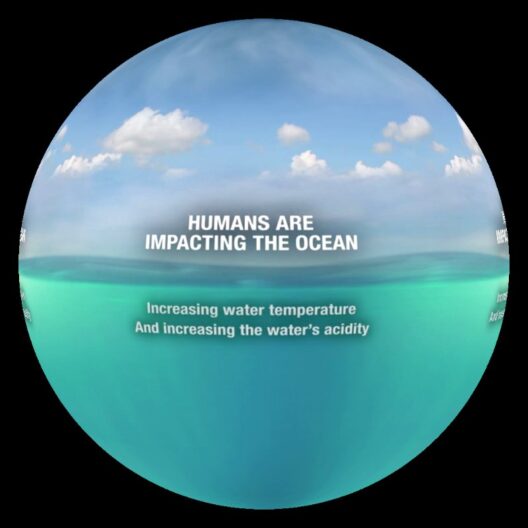The modern fascination with concrete as a building material is undeniable. Its ubiquity and multifaceted applications span everything from humble sidewalks to majestic skyscrapers. However, beneath this veneer of utility lies a sobering reality: concrete production is one of the most significant contributors to global warming. The environmental cost associated with its manufacture is steep, demanding our urgent attention if we wish to mitigate the impending climate crisis.
Concrete, composed largely of cement, aggregates, and water, serves as the backbone of modern infrastructure. As cities expand and develop, the demand for concrete skyrockets. Yet, the process of producing cement, which is calcinated at high temperatures, is not only energy-intensive but also generates approximately 8% of global carbon dioxide emissions. This startling statistic underscores a critical paradox: the very material that supports our urban lifestyles simultaneously jeopardizes our planet’s climate stability.
Exploring the hidden costs of concrete reveals a complex interplay between environmental ethics and societal needs. Construction is often perceived as a catalyst for progress, a necessary evil in our relentless quest for advancement. Yet this perspective may obscure the long-term consequences of our material choices. Each concrete structure, while seemingly conducive to human habitation or activity, extends its tentacles well beyond functional usefulness to encapsulate a plethora of environmental ramifications.
The extraction of raw materials for concrete also carries a heavy ecological footprint. Quarrying operations disrupt local ecosystems, decimate flora and fauna, and degrade water sources. The dust and noise generated during these processes not only harm air quality but also impact nearby communities. The interplay of increased demand and extraction activity highlights an insidious trend; the more we build, the more we deplete our planet’s resources.
Moreover, the obsession with large-scale concrete structures feeds into a broader cultural narrative that equates growth with progress. However, this linear relationship is becoming increasingly tenuous in the wake of climate change. The proliferation of concrete can, paradoxically, inhibit the very resilience cities need to adapt to environmental challenges. Flooding, urban heat islands, and biodiversity loss are exacerbated by the widespread use of impervious concrete surfaces that hinder natural water drainage and contribute to rising temperatures.
Transitioning towards more sustainable construction practices necessitates a re-evaluation of our dependency on concrete. Innovative alternatives do exist, such as rammed earth, limecrete, and recycled materials that can significantly reduce carbon footprints. These alternative building materials engender more harmonious interactions with the environment, showcasing that human ingenuity can fashion solutions that align with ecological principles. Nevertheless, greater investment in research, development, and education is crucial for these solutions to gain traction in the mainstream construction industry.
The potential for circular economy models further illustrates a path away from traditional concrete reliance. Implementing life cycle assessments for construction materials encourages a holistic understanding of their environmental impact. By embracing a cradle-to-cradle approach, construction could transition toward regenerative systems that emphasize reuse and reclamation, instead of a one-way trajectory culminating in waste.
In addition, the carbon sequestration potential of building materials deserves attention. Bio-based materials, such as timber and hempcrete, can actively sequester carbon during their growth and provide an energy-efficient alternative to concrete. Furthermore, investing in green roofs and vertical gardens not only creates aesthetic value but also enhances biodiversity, mitigates urban heat effects, and improves air quality.
Education plays a pivotal role in fostering a shift in mentality towards sustainable construction. The architectural and engineering education systems must integrate environmental consciousness within their curricula, emphasizing the importance of eco-friendly materials and techniques. Architects and builders must be equipped with the knowledge and skills necessary to advocate for sustainable practices amidst an often resistant industry.
While the allure of concrete may persist, it is imperative to recognize its implications within the broader environmental context. Advocacy for sustainable practices requires a concerted effort from various stakeholders, including policymakers, architects, urban planners, and the public. Legislation that promotes sustainable materials and construction practices can catalyze a transition towards more ecologically responsible building methods.
In conclusion, as we stand at the intersection of urban development and environmental sustainability, the cost of concrete becomes a vital consideration. The allure of this compact composite material must be reevaluated through a critical lens that acknowledges its environmental dissonance. By championing innovative materials, adopting circular economy principles, and prioritizing education, society can navigate a path beyond concrete. This journey entails confronting the inherent complexities of modern construction, fostering a paradigm shift capable of alleviating the significant climate impact associated with our beloved concrete.




